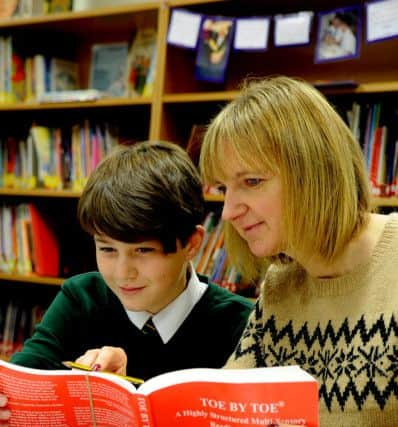How the work of a retired 89-year-old Yorkshire teacher is still helping pupils learn to read


But throughout her life, her burning desire had been to work as a teacher.
Her commitment to this cause not only saw her achieve this goal, but has meant that at even at the age of 89 her work is still improving the reading skills and life chances of children in classrooms today.
Advertisement
Hide AdAdvertisement
Hide AdWhat she developed as her own method of helping children to read in her village school has since become an established way of helping pupils who are dyslexic or struggle with reading to improve.


And now a trial to measure the impact of her work, called Toe by Toe, is due to take place in America under the auspices of John Hopkins University.
After the Second World War, Mrs Cowling married and brought up a family and it was not until the mid-1960s that she realised that she could fulfill her dream of becoming a teacher.
She went to night school in the evenings, passed the necessary exams and enrolled at the nearby Bingley Training College. She qualified in 1968 after training in the evening and at the age of 42 began teaching at Sandal Road Primary, in Baildon.
Advertisement
Hide AdAdvertisement
Hide AdShe stayed there teaching classes of six and seven-year-olds until she retired in 1989.


But it was only then that the impact of her work began to spread beyond her own school.
Her son, Frank, said: “Her great passion was always the teaching of reading and she had been baffled to discover why some bright children in her classes struggled to pick up basic reading skills.
“At the time few people had even heard the term ‘dyslexia’, but she was fascinated by the condition and her research soon became an all-consuming obsession.
Advertisement
Hide AdAdvertisement
Hide Ad“She asked parents for permission to teach their children at her home – without charge – after the end of the school day.
“She divided them into two groups – a control group where conventional methods were used and her guinea pigs where she tried anything and everything to see what would work.
“This painstaking process of trial and error was the genesis of what later came to be known as Toe by Toe.
“She named the system when a grateful parent commented that she could see how it worked: ‘Progress by tiny steps – almost one toe at a time.’”
Advertisement
Hide AdAdvertisement
Hide AdToe by Toe was published in 1994 after her former headteacher, Stan Hinchcliffe, had told her “she couldn’t die and take it with her”.
Her son added: “He knew the value of her work because he knew that every child who came through his school in 10 years and more had been able to read.
“She ended up gambling her teacher’s pension to finance its publication but it became a phenomenal success.”
It is now used in more than 20,000 schools around the country and in more than 70 different countries.
One of those is Lindley Junior School in Huddersfield.
Advertisement
Hide AdAdvertisement
Hide AdThe school’s deputy head Emma Binns said; “It is a very structured way of learning phonics.
“The biggest difference between Toe by Toe and conventional phonics teaching is that it is done one to one and the teacher can respond to each child’s needs.
“We use it with children who are dyslexic or if we find that a child struggling to decode letters and is not developing these skills as we would expect and it has been very effective.”
Mr Cowling added: “Keda’s ‘Little Red Book’ has now taught literally hundreds of thousands of dyslexic people to read.
Advertisement
Hide AdAdvertisement
Hide Ad“But over the years it has proved difficult to obtain irrefutable stats as to the effectiveness of Toe bt Toe with struggling readers.
“We are preparing to run a trial in the USA under the auspices of John Hopkins University which will commence in the near future.”